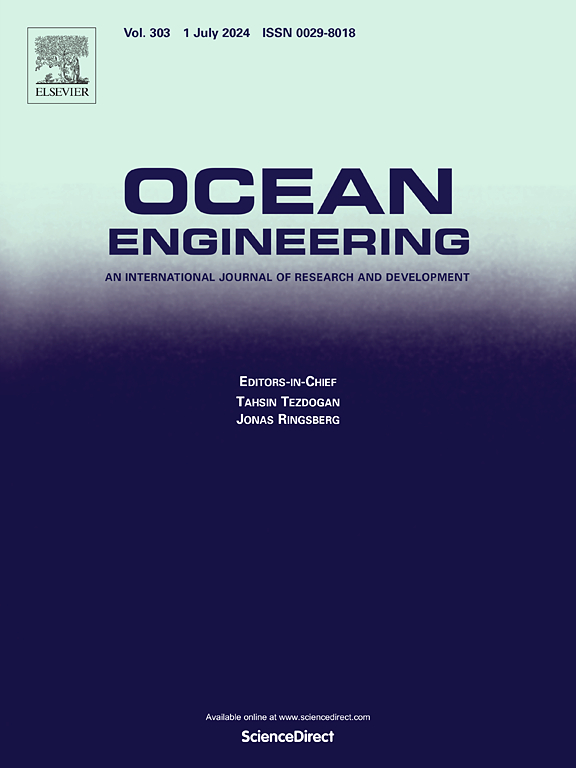普陀山-葫芦岛水道经济约束下的潮汐涡轮机阵列布局优化
IF 4.6
2区 工程技术
Q1 ENGINEERING, CIVIL
引用次数: 0
摘要
要成功实现潮汐流能源产业的大规模商业化,必须考虑阵列收益,而不仅仅是阵列功率性能。本文报告了在普陀山-葫芦岛水道应用梯度优化算法确定最佳阵列规模和布局的情况。通过引入收支平衡功率概念,在优化过程中考虑了阵列的经济可行性。结果表明,收支平衡功率约束促进了每台风机输出功率的增加。与此相对应的是,由于经济性限制,涡轮机的总数量会减少,从而导致整个阵列的总发电量下降。因此,阵列利润会随着收支平衡功率的增加而减少。此外,还考虑了水深与阵列成本之间的假定实际限制,展示了阵列设计与空间变化之间错综复杂的关系。最后,利用这些数值实验,我们根据优化的涡轮机布局得出了开发优先级图,以帮助指导普陀山-葫芦岛水道的潮汐流能源开发。本文章由计算机程序翻译,如有差异,请以英文原文为准。
Economics-constrained tidal turbine array layout optimisation at the Putuoshan–Hulu island waterway
For the successful large scale commercialisation of the tidal stream energy industry it is imperative to consider array revenue rather than simply array power performance. This article reports on the application of a gradient-based optimisation algorithm to establish the optimal array size and layout at the Putuoshan–Hulu Islands waterway. Array economic viability is considered within the optimisation by introducing a break even power concept. Results show that the break even power constraint promotes increased power output per turbine. In response, the overall turbine number decreases due to economics-constraints, leading to an overall reduction in overall array energy yield. Thus, array profit decreases with increments in break even power. A hypothetical practical constraint linking water depth and array cost is also considered, demonstrating an intricate relationship between array design and spatial variability. Finally, using these numerical experiments, we derive development priority maps based on the optimised turbine layouts in order to help guide the tidal stream energy developments in the Putuoshan–Hulu Islands waterway.
求助全文
通过发布文献求助,成功后即可免费获取论文全文。
去求助
来源期刊

Ocean Engineering
工程技术-工程:大洋
CiteScore
7.30
自引率
34.00%
发文量
2379
审稿时长
8.1 months
期刊介绍:
Ocean Engineering provides a medium for the publication of original research and development work in the field of ocean engineering. Ocean Engineering seeks papers in the following topics.
 求助内容:
求助内容: 应助结果提醒方式:
应助结果提醒方式:


